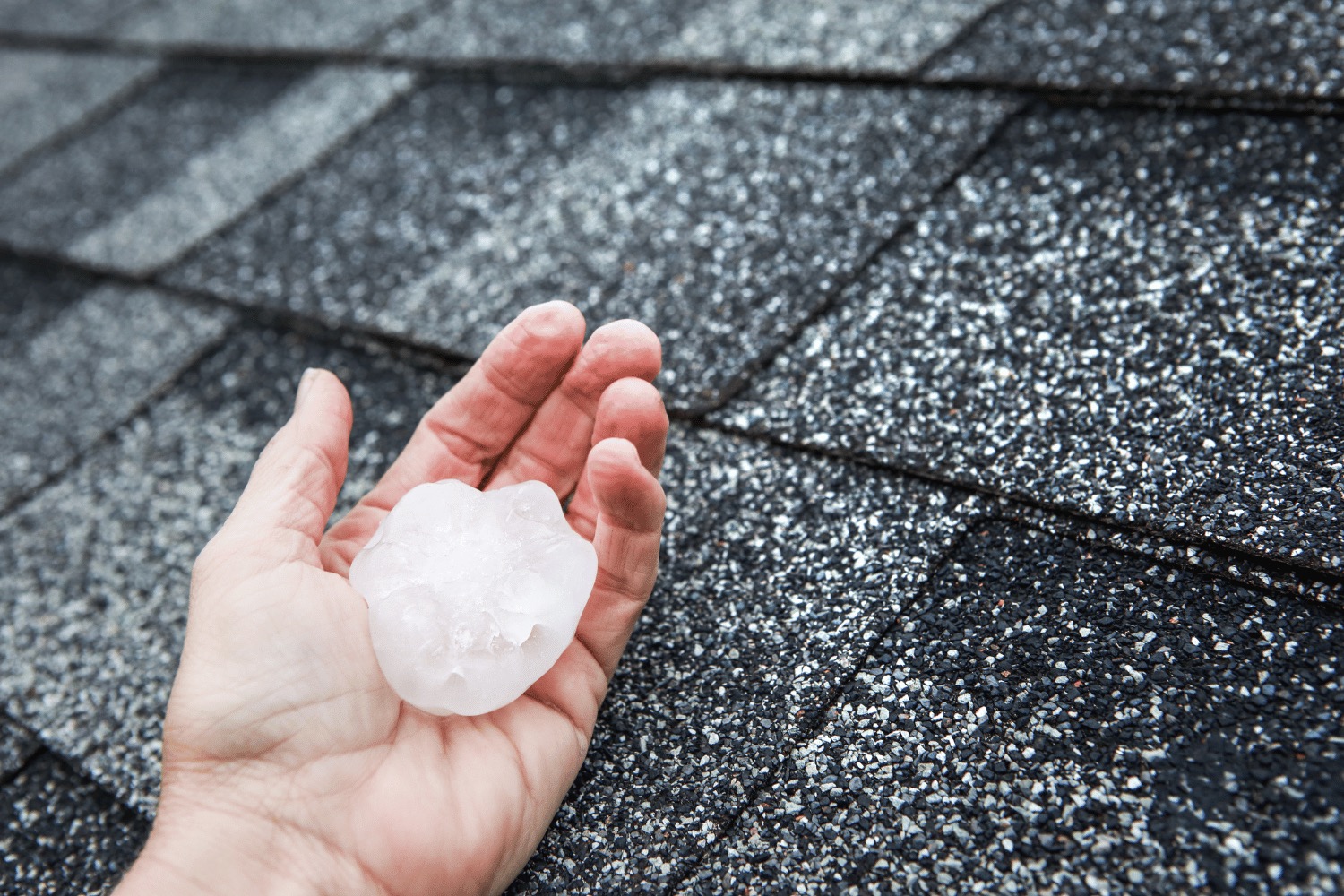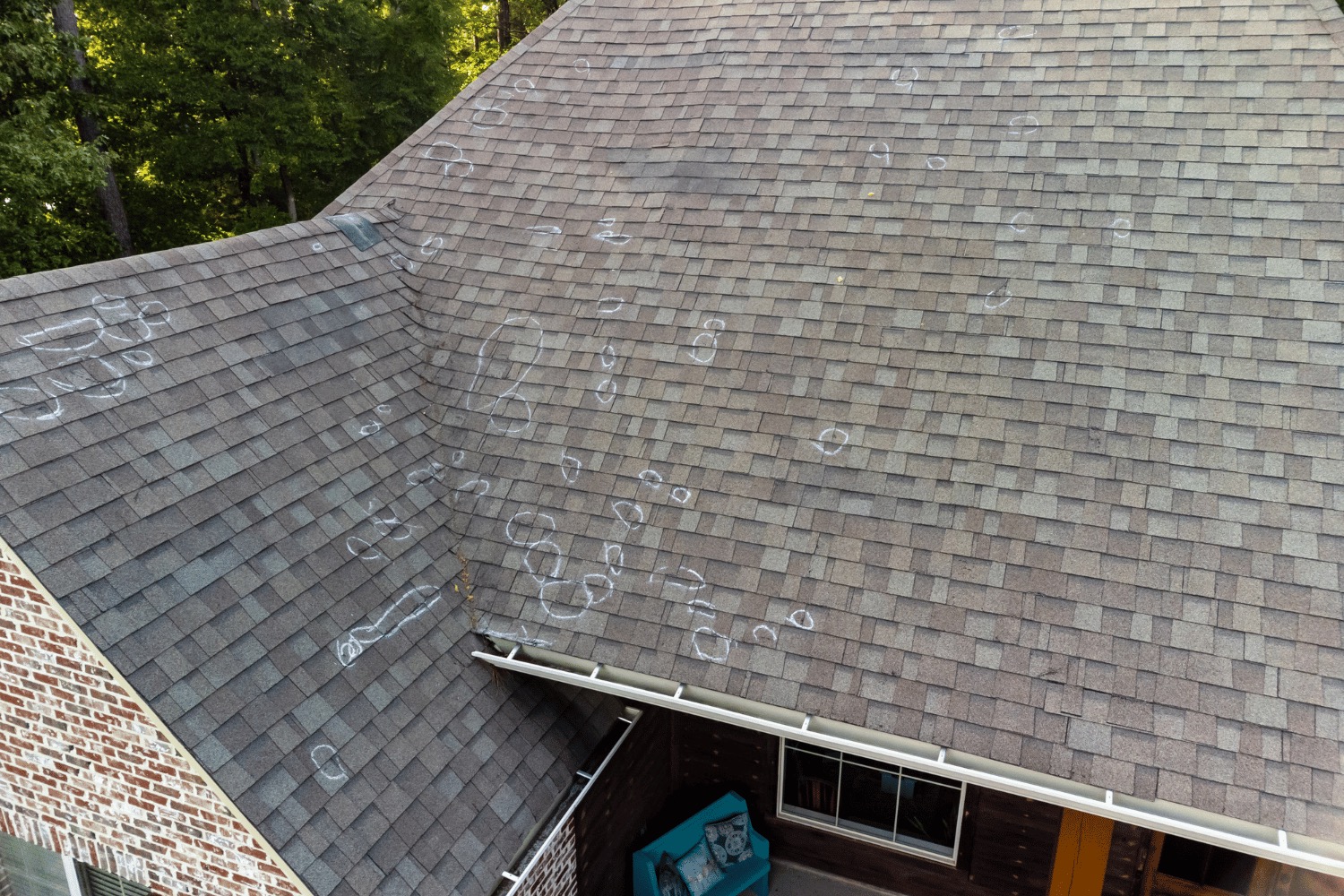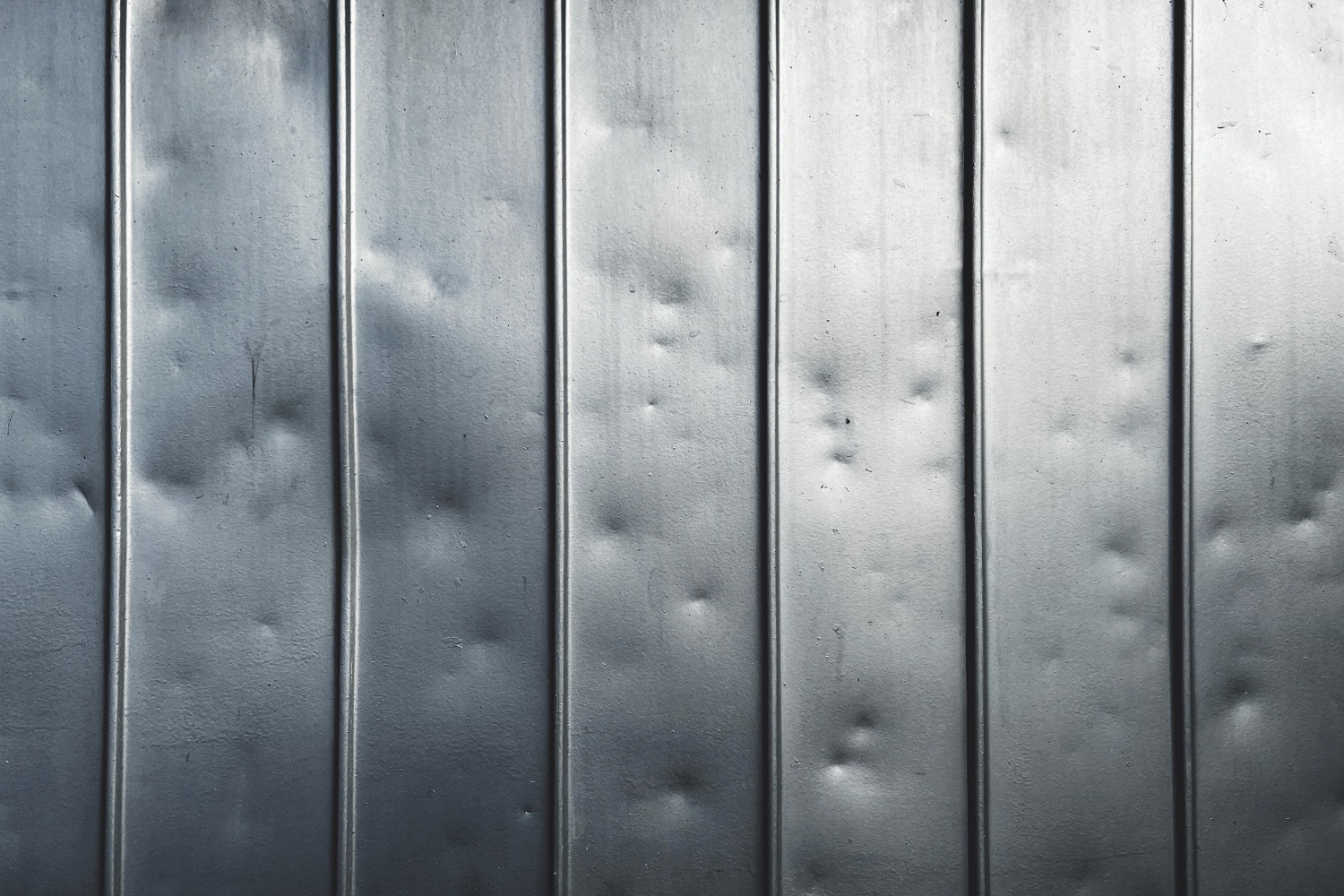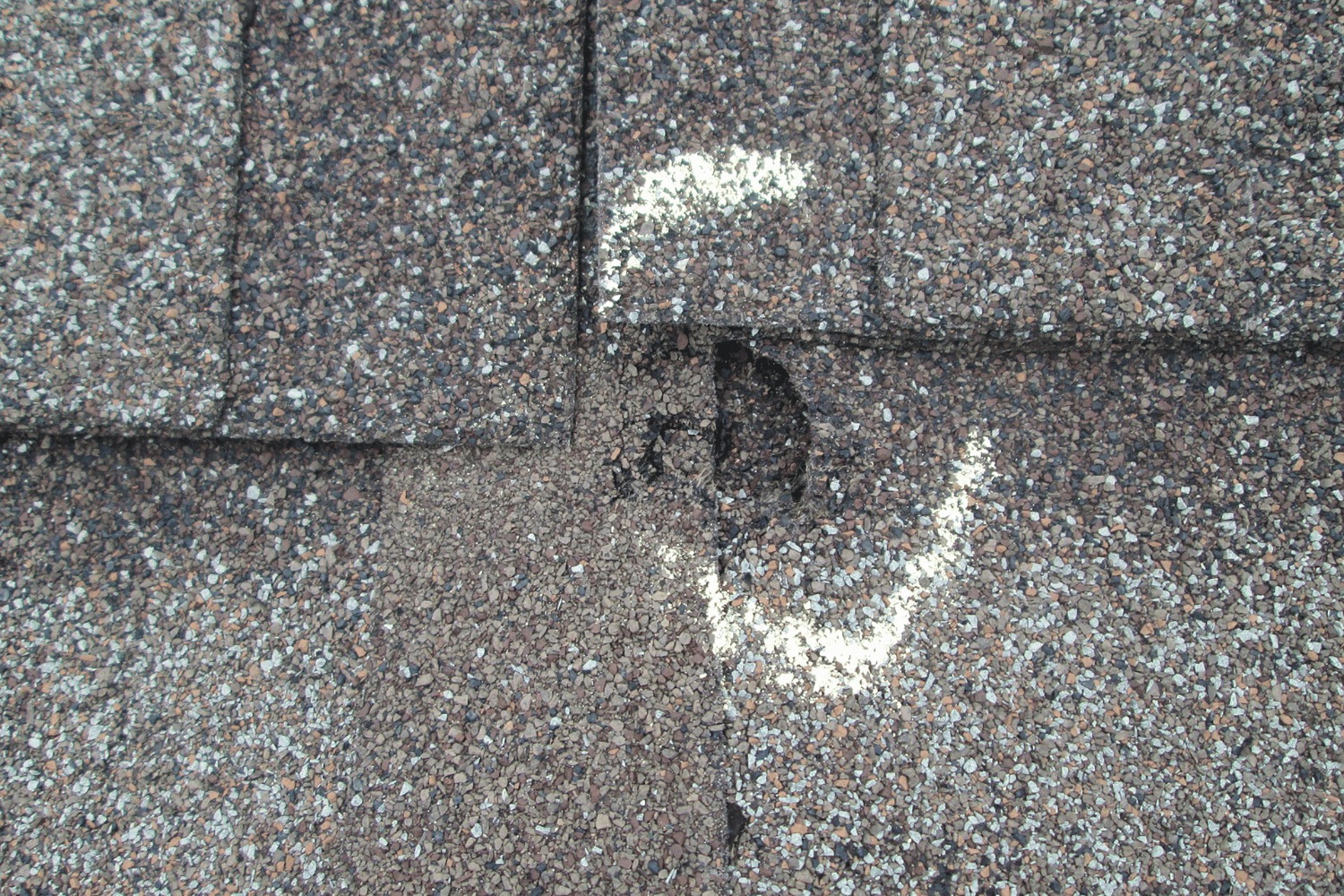Hail damage to your roof can cause serious issues if not addressed quickly. This guide will help you identify signs of hail damage roof and explain what steps to take next. Learn what visible and hidden damages look like, why inspections are crucial, and how to manage repairs effectively.
Key Takeaways
-
Regular roof inspections are essential for identifying both visible and hidden hail damage, which can lead to severe structural issues and costly repairs if left unaddressed.
-
Documenting damage with photographs and promptly contacting a professional contractor can help streamline the insurance claims process and ensure all necessary repairs are covered.
-
Installing impact-resistant shingles and performing regular maintenance and inspections can prevent or minimize future hail damage and maintain the overall health of the roof.
Identifying Hail Damage on Your Roof

Illustration of damaged asphalt shingles
Hail damage often goes unnoticed until it’s too late, leading to severe structural issues and costly repairs. Even if the damage isn’t immediately visible after a hailstorm, getting your roof inspected is highly recommended. Hail damage can manifest in many forms, including:
-
Visible dents and cracks
-
Missing or loose shingles
-
Granule loss on the roof surface
-
Soft spots or sagging areas
-
Leaks or water damage inside the home
Hidden damage can compromise the roof’s integrity over time, so it’s important to address any potential hail damage as soon as possible.
A professional contractor can provide a thorough inspection of your entire roof to identify all potential issues and recommend appropriate repairs.
Visible Damage to Asphalt Shingles
Visible damage to shingles is often the first sign of roof hail damage. Hailstones can leave behind distinct marks, such as dents, cracks, and bruises, which can lead to leaks if left unaddressed. Granule loss is another common issue, where the protective granules on the shingles are dislodged by the hail impacts, exposing the underlying matting to UV light and other elements. These granules often accumulate in gutters, signaling that the shingles have sustained damage.
It’s advisable to photograph these visible signs for insurance claims. Clear images of dents, granule loss, and any missing shingles can help substantiate your claim and ensure you receive the necessary coverage for repairs.
Hidden Damage
Hidden damage from hail can be just as problematic as visible damage, if not more so. Hail impacts might create small punctures or splits in the shingles that aren’t immediately noticeable but can lead to significant water damage over time. These issues might go unnoticed without a professional’s keen eye, further underlining the necessity for regular roof inspections.
For instance, splitting in shingles caused by hail is typically only visible from the backside of the shingle, making it hard to spot without lifting the shingles or using specialized equipment. Dents and dings might seem like mere cosmetic damage, but they can weaken the shingles and expose the underlying structure to water infiltration.
Damage to Roof Vents and Flashing

Illustration of damaged roof vents and flashing
Hail can also cause significant damage to the metal components on your roof, such as vents and flashing. These elements are designed to protect the roof’s vulnerable areas, and any damage can lead to leaks and further structural issues. Common signs of hail damage on these components include dents, dings, and chipped surfaces.
It’s not just the vents and flashing that need attention; other metal components like skylights, gutters, and chimney caps should also be assessed for hail damage. Maintaining the overall health of your roof necessitates that these elements are intact.
Secondary Signs of Hail Damage Around Your Property
While the roof often takes the most significant impact in a hailstorm, other parts of your property can show secondary signs of damage that indicate potential roof issues. Dented gutters and downspouts, damaged siding and windows, and clues from your landscaping can all hint at a hail-damaged roof.
Dented Gutters and Downspouts

Illustration of dented gutters and downspouts
Gutters and downspouts are often the first to show signs of hail damage. Dents and cracks in these components can disrupt water drainage, leading to water pooling around the foundation of your home. The presence of splatter marks or an unusual amount of granules in your gutters and downspouts can also indicate that your roof’s shingles have been compromised.
Misalignment or improper drainage due to hail damage can further exacerbate the issue, potentially leading to more severe structural problems if not addressed promptly.
Damaged Siding and Windows

Illustration of damaged siding and windows
Hail storms can cause significant storm damage to the siding and windows of your home. Dents, punctures, and cracks in the siding are common indicators of hail impact. Similarly, windows may chip or shatter, highlighting the storm’s intensity and suggesting potential damage to the roof.
These visible damages to your home’s exterior not only affect its appearance but also point to the need for a thorough roof inspection to check for less obvious hail damage and potential roof damage.
Landscaping Clues
Your landscaping can also provide clues about hail impact. Shredded leaves, bruised plant stems, and broken branches indicate the strength of the hailstorm and suggest that your roof might have sustained damage. Additionally, checking exterior items like air conditioners and outdoor furniture for dents can further confirm the severity of the hail impacts.
Steps to Take After Suspecting Hail Damage
If you suspect hail damage to your roof, it is important to act quickly to prevent further issues. Here are the critical steps to take:
-
Conduct a preliminary inspection of your roof to assess the damage.
-
Document the damage by taking photos or videos.
-
Contact a professional roofing contractor to assess the extent of the damage and provide necessary repairs or replacements.
A professional inspection will provide a thorough assessment and help facilitate the insurance claims process.
Conduct a Preliminary Inspection
Conducting a preliminary inspection can help identify obvious signs of hail damage. Here’s how:
-
Start by using binoculars to inspect the roof from the ground for any visible damage, such as missing or cracked shingles.
-
If it’s safe, you can use a ladder and soft-soled shoes to inspect the roof more closely.
-
Mark noticeable hail damage with chalk.
-
Take photos for insurance claims.
Be cautious and follow appropriate safety guidelines during the inspection to avoid accidents.
Document the Damage

Illustration of documenting hail damage
For a successful insurance claim, it’s important that the damage is documented thoroughly. Take extensive photographs of the damage, including close-ups of hail hits on shingles and any other affected areas. This visual evidence will support your claim and help ensure that you receive the appropriate coverage for repairs.
Additionally, collect repair estimates and keep records of all communications with your insurance company and contractors throughout the claims process.
Contact a Professional Roofing Contractor
After documenting the damage, the next step is to contact a professional roofing contractor. A professional can provide a detailed assessment of the roof’s condition and recommend necessary repairs. They can also assist with the insurance claims process, ensuring that all damage is accurately reported and covered.
It’s important to choose a reputable local roofing contractor with experience in handling hail damage to ensure the best results.
The Role of Insurance in Hail Damage
Insurance plays a vital role in managing hail damage repairs. Most homeowners’ policies cover hail damage, but understanding your policy, filing a claim, and working with an adjuster are essential steps to ensure you receive the necessary coverage.
Understanding Your Insurance Policy
Knowing exactly what is covered and any exclusions or limitations that may apply requires a clear understanding of your insurance policy. Policies typically have deductibles that must be met before coverage kicks in, and some may offer additional endorsements for wind and hail damage.
Reviewing your policy details can help you prepare for the claims process and avoid any surprises.
Filing an Insurance Claim
To avoid delays, it’s recommended to file an insurance claim promptly. Here are some steps to follow:
-
Provide detailed documentation, including photos and repair estimates, to support your claim.
-
Keep records of all communications with your insurance company and contractors.
-
This will help ensure a smooth claims process.
Working with an Insurance Adjuster
A fair damage assessment requires close collaboration with an adjuster during their inspection. Here are some steps to follow:
-
Be present during the inspection to point out all areas of damage.
-
Ensure your roofing contractor is also present.
-
Coordinate with both the adjuster and contractor to avoid any discrepancies and ensure that all damage is accounted for.
If there are disagreements with the adjuster’s assessment, you can request a re-inspection or hire an independent adjuster to submit a new report.
Repairing and Preventing Hail Damage
Maintaining your roof’s integrity and protecting your home from future storms necessitates repairing and preventing hail damage. Exploring repair and replacement options, installing impact-resistant roof shingles, and conducting regular maintenance and inspections are key steps.
Roof Repair and Replacement Options
The extent of the damage will determine whether you need minor repairs or a full roof replacement. Localized damage can often be patched up by replacing individual shingles, while extensive damage may require a full roof replacement to ensure the roof’s structural integrity.
Consulting with a roofing contractor can help determine the best course of action and choose the right roofing materials.
Installing Impact-Resistant Shingles
Installing impact-resistant shingles is an effective way to prevent or reduce hail damage. Class 4 impact-resistant shingles are designed to withstand greater levels of impact and can help preserve the roof’s integrity during a hailstorm. Additionally, these shingles may qualify for discounts on homeowners’ insurance.
Regular Maintenance and Inspections
To catch and repair hail damage early, regular maintenance and inspections are recommended. Conducting professional roof inspections at least twice a year, especially after major storms, can help identify minor issues before they become significant problems.
Removing debris from the roof and gutters will also reduce the risk of water damage and maintain proper drainage.
Summary
Hail damage can have severe implications for your roof and home. By identifying both visible and hidden damage, looking for secondary signs around your property, and taking the appropriate steps after suspecting damage, you can protect your home and ensure necessary repairs are made. Understanding your insurance policy and working closely with an adjuster and roofing contractor will facilitate the claims process and ensure fair coverage.
Preventative measures like installing impact-resistant shingles and conducting regular maintenance and inspections can help mitigate future damage. Stay proactive and vigilant to keep your home safe and sound through any storm.
Frequently Asked Questions
How can I identify hail damage on my roof?
Inspect your roof for visible signs like dents, cracks, and granule loss on shingles, and consider a professional inspection for hidden damage. Hiring a professional can ensure all damage is properly identified and addressed.
What should I do if I suspect hail damage to my roof?
If you suspect hail damage to your roof, conduct a preliminary inspection, take photos, and then contact a professional roofing contractor for a thorough assessment.
How does insurance cover hail damage repairs?
Insurance typically covers hail damage repairs for homeowners. It’s important to review your policy, file a claim, and work with an insurance adjuster for a fair assessment.
What are impact-resistant shingles, and how do they help?
Impact-resistant shingles are designed to reduce hail damage and may qualify for insurance discounts by withstanding greater impact levels.
Why are regular roof inspections important?
Regular roof inspections are important because they help identify and repair minor damage before it becomes a major issue, maintaining the roof’s integrity and preventing costly repairs.

